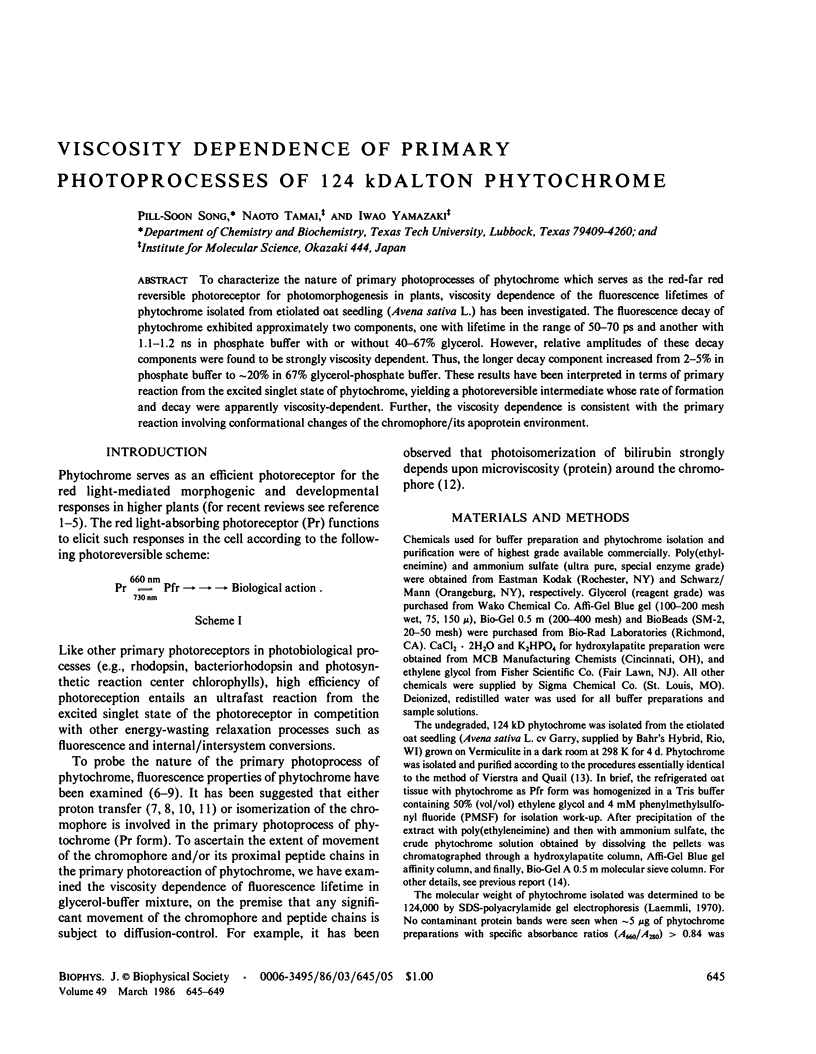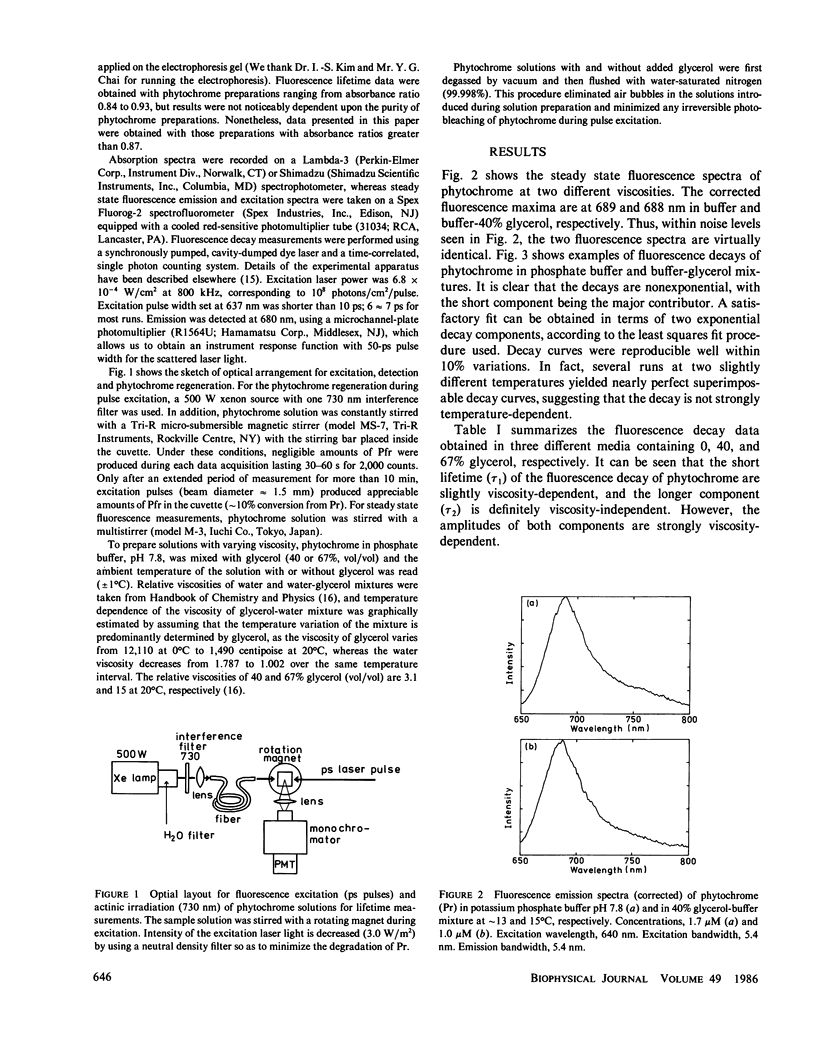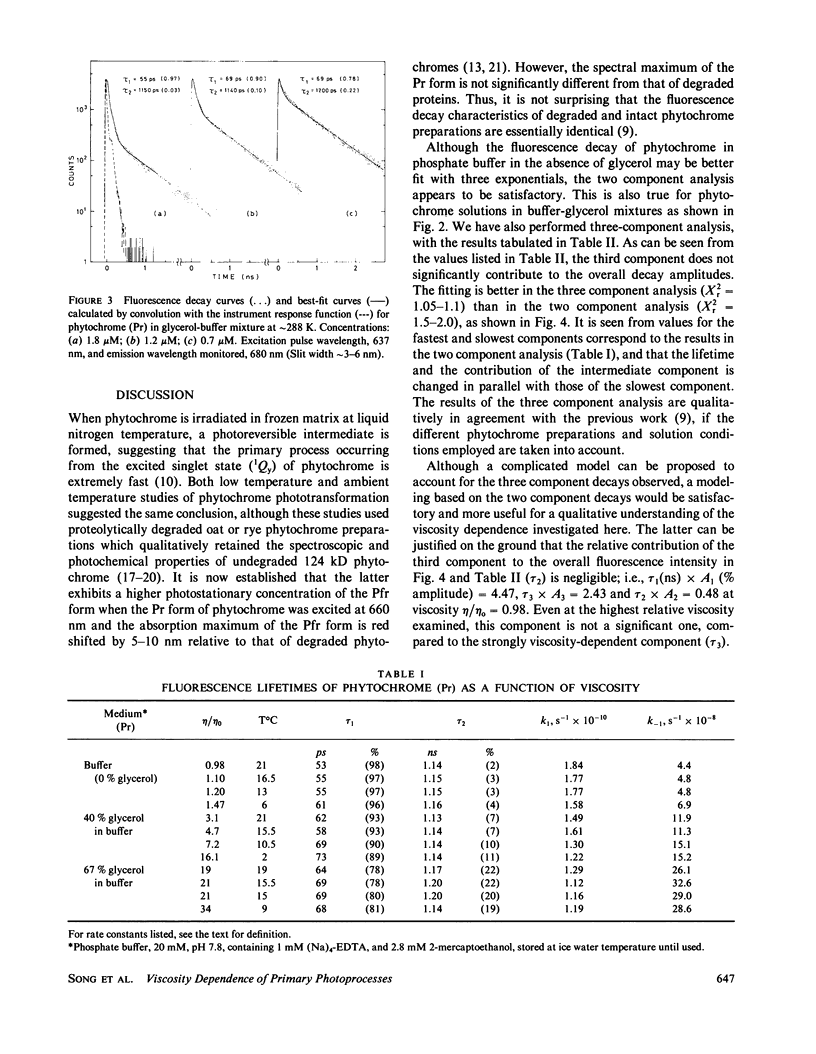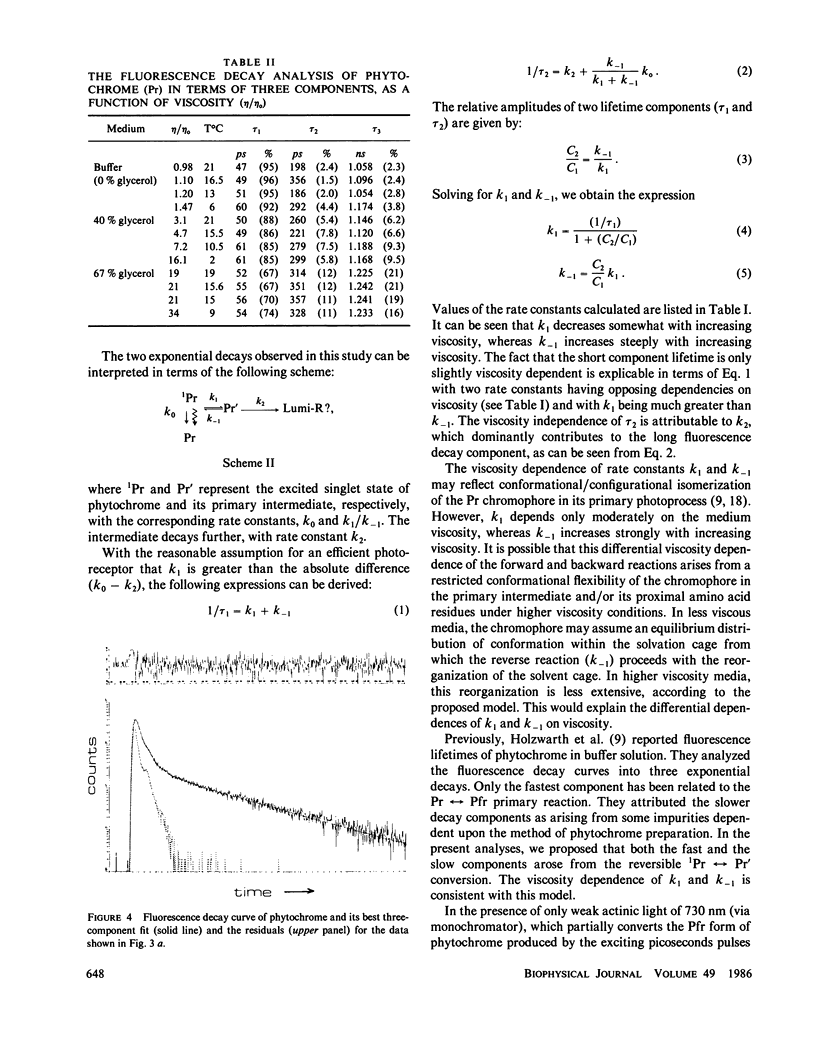Abstract
To characterize the nature of primary photoprocesses of phytochrome which serves as the red-far red reversible photoreceptor for photomorphogenesis in plants, viscosity dependence of the fluorescence lifetimes of phytochrome isolated from etiolated oat seedling (Avena sativa L.) has been investigated. The fluorescence decay of phytochrome exhibited approximately two components, one with lifetime in the range of 50-70 ps and another with 1.1-1.2 ns in phosphate buffer with or without 40-67% glycerol. However, relative amplitudes of these decay components were found to be strongly viscosity dependent. Thus, the longer decay component increased from 2-5% in phosphate buffer to ∼20% in 67% glycerol-phosphate buffer. These results have been interpreted in terms of primary reaction from the excited singlet state of phytochrome, yielding a photoreversible intermediate whose rate of formation and decay were apparently viscosity-dependent. Further, the viscosity dependence is consistent with the primary reaction involving conformational changes of the chromophore/its apoprotein environment.
Full text
PDF




Selected References
These references are in PubMed. This may not be the complete list of references from this article.
- Kendrick R. E., Spruit C. J. Phototransformations of phytochrome. Photochem Photobiol. 1977 Aug;26(2):201–214. doi: 10.1111/j.1751-1097.1977.tb07473.x. [DOI] [PubMed] [Google Scholar]
- Litts J. C., Kelly J. M., Lagarias J. C. Structure-function studies on phytochrome. Preliminary characterization of highly purified phytochrome from Avena sativa enriched in the 124-kilodalton species. J Biol Chem. 1983 Sep 25;258(18):11025–11031. [PubMed] [Google Scholar]
- Sarkar H. K., Song P. S. Phototransformation and dark reversion of phytochrome in deuterium oxide. Biochemistry. 1981 Jul 21;20(15):4315–4320. doi: 10.1021/bi00518a012. [DOI] [PubMed] [Google Scholar]
- Song P. S., Chae Q., Briggs W. R. Temperature dependence of the fluorescence quantum yield of phytochrome. Photochem Photobiol. 1975 Jul-Aug;22(1-2):75–76. doi: 10.1111/j.1751-1097.1975.tb06726.x. [DOI] [PubMed] [Google Scholar]
- Song P. S., Chae Q., Gardner J. D. Spectroscopic properties and chromophore conformations of the photomorphogenic receptor: phytochrome. Biochim Biophys Acta. 1979 Feb 26;576(2):479–495. doi: 10.1016/0005-2795(79)90423-9. [DOI] [PubMed] [Google Scholar]
- Song P. S. Protozoan and related photoreceptors: molecular aspects. Annu Rev Biophys Bioeng. 1983;12:35–68. doi: 10.1146/annurev.bb.12.060183.000343. [DOI] [PubMed] [Google Scholar]
- Song P. S., Sarkar H. K., Kim I. S., Poff K. L. Primary photoprocesses of undegraded phytochrome excited with red and blue light at 77 K. Biochim Biophys Acta. 1981 Apr 13;635(2):369–382. doi: 10.1016/0005-2728(81)90035-9. [DOI] [PubMed] [Google Scholar]


